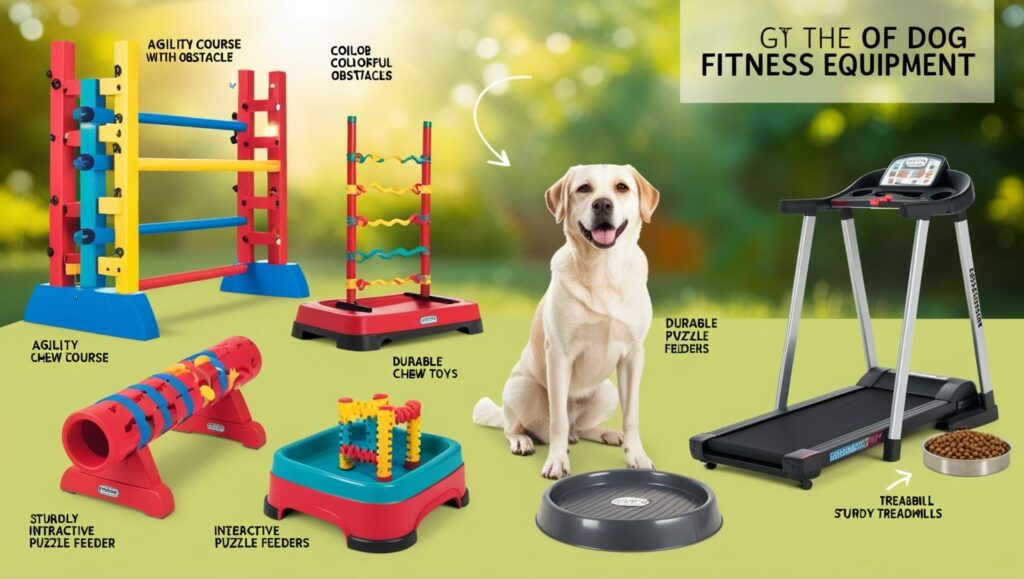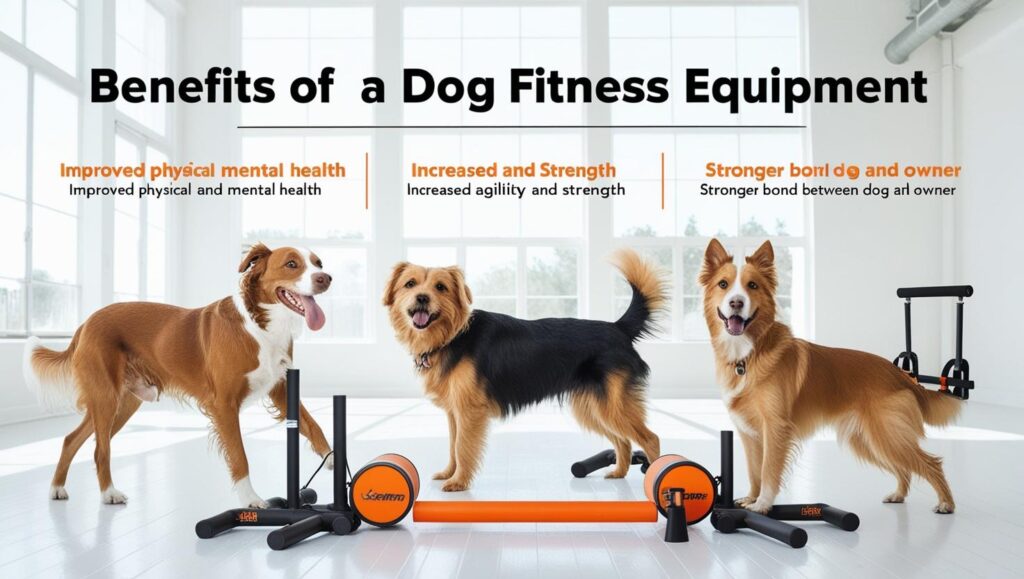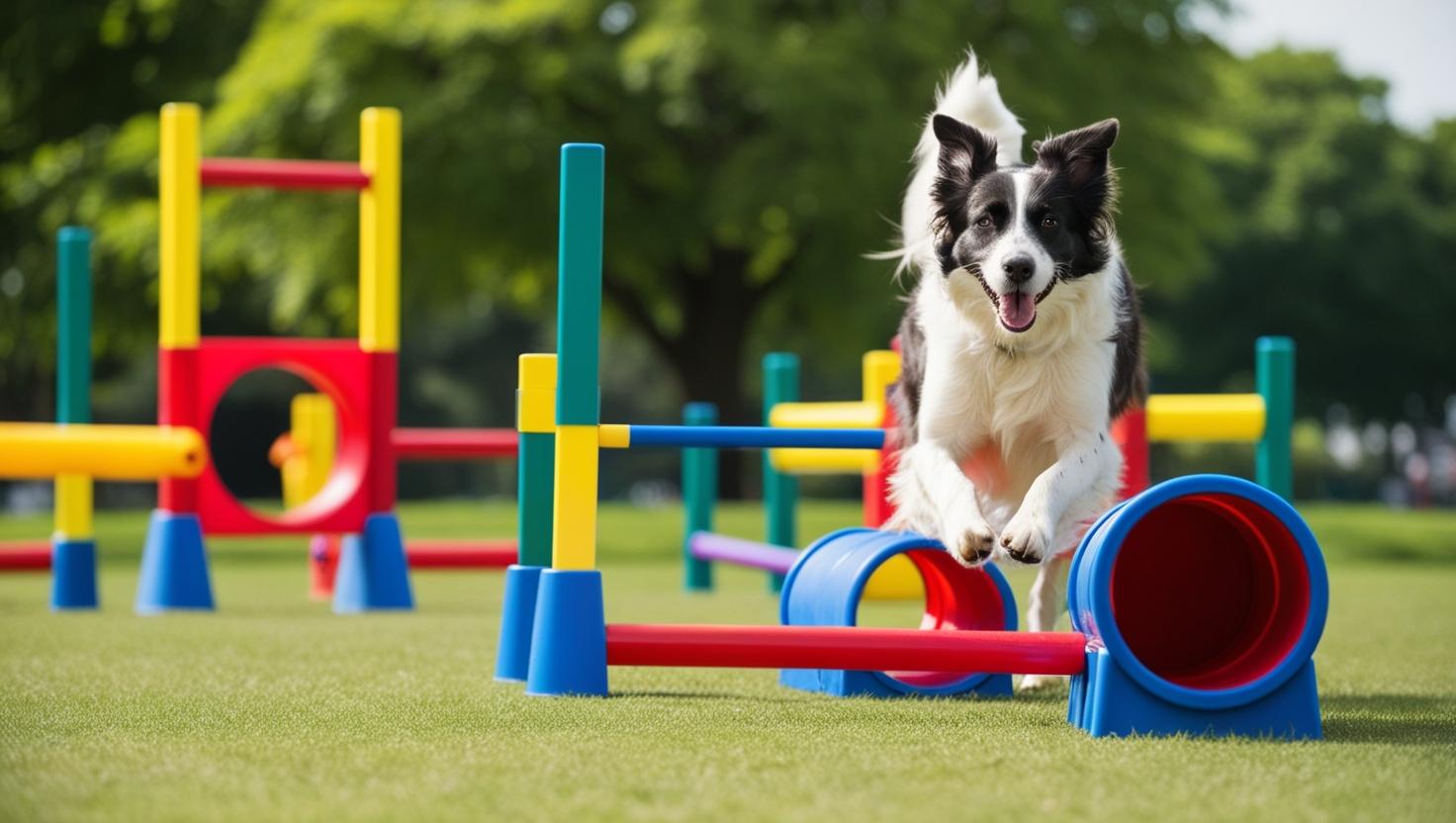Dog fitness equipment
Dog Fitness Equipment: A Comprehensive Guide to Keeping Your Canine Companion Healthy and Active
Pet fit has been rather popular among dog owners in recent years. Dogs require consistent exercise to keep a healthy weight, develop muscle, and enhance general well-being, much like people do. It might be difficult to ensure your dog gets the required physical exercise given hectic schedules and restricted outside areas. Here is where dog fitness tools find application. From agility courses to treadmills, many toys and devices are meant to keep your furry buddy busy and involved. This article will discuss the various types of dog fitness equipment, their advantages, and how to select the best items for your pet. We will also answer often-asked questions so you may decide with knowledge.
Why Is Dog Fitness Important?
Before delving into the technicalities of dog fitness equipment, you need to know why physical exercise is so important for your dog. Dogs, whatever their breed or weight, need regular exercise to:
Dog Fitness Benefits
• Obesity can lead to joint problems, diabetes, and heart disease.
• Regular exercise releases tension, anxiety, and bad behaviors.
• Exercise is crucial for elderly dogs for muscle and joint development.
• Group playdates or agility training foster friendliness.
• Fit, active dogs lead longer, better lives.
• Investing in dog fitness equipment improves pets’ quality of life.
Types of Dog Fitness Equipment

Dogs can find a great variety of workout tools that meet their demands, breeds, and degree of activity. The most often used choices will be discussed below:
1. Dog treadmill
Particularly made to give your dog a safe and regulated surrounding for running or walking, dog treadmills are perfect for:
Dog Walking Safety Features
• Adapt to bad weather days.
• Ideal for small living areas without garden access.
• Ideal for dogs undergoing rehabilitation.
• Features include speed control, safety rails, and silent operation.
2. Agility tools
A great and interesting approach to keeping your dog both physically and psychologically active is agility training. Typical agility tools comprise:
Jump bars, tunnels, and pole weaving are effective for teaching dogs to jump over challenges, boost confidence and coordination, and improve balance. A-frames, overdoing it, and dog walks are ideal for high-energy dogs like Jack Russell Terriers and Australian Shepherds.
3. interactive objects
Interactive toys, such as automatic ball launchers, treat-dispensing toys, and puzzle toys, are designed to keep dogs active and stimulate their mental abilities while also promoting problem-solving skills.
4. Vests with Weights
Weighted vests enhance muscle strength and endurance, which is particularly beneficial for working dogs or training. Start with lightweight vests and gradually increase weight to prevent overdoing.
5. Equipment and swimming pools
Dog Fitness:
• Swimming is a low-impact workout for dogs with joint problems.
• Small, inflatable pools are recommended.
• Life jackets are recommended for buoyancy for beginners.
• Water treadmills combine swimming and treadmill workouts.
6. Stability and Equilibrium Tools
Your dog’s core strength and coordination would benefit much from balance boards, wobble cushions, and stability discs. Many times utilized in canine physical therapy are these instruments.
7. Fetch Systems
These devices are designed to automatically launch balls or toys, fetch devices, and allow your dog to play without your involvement. Dogs with great energy or busy pet owners would find them perfect.
How Should One Select Appropriate Dog Exercise Equipment?
Given all the choices, choosing the correct fitness tool for your dog might be taxing. Here are some elements to give thought to:
Breed and Size: While smaller dogs would like lighter toys, larger breeds could call for more robust equipment.
While low-energy dogs could appreciate interactive toys, high-energy dogs could benefit from agility courses or treadmills.
Health Conditions: Choose low-impact equipment like swimming pools or balance boards if your dog suffers from joint problems or is healing from an accident.
Space Availability: Think about your home’s space situation. Agility courses and treadmills call for more room than interactive toys.
Budget: Dog fitness tools range from reasonably priced toys to luxury treadmills. Figure out your budget before you buy.
Benefits of Using Dog Fitness Equipment

Dog Fitness Equipment Benefits
• Allows home exercise without time or weather restrictions.
• Allows customization of training to meet specific dog needs.
• Includes agility training for dog-human growth.
• Provides mental alertness through interactive toys and puzzles.
• Allows monitoring and modification of a dog’s development with treadmills.
Conclusion
Dog fitness equipment would be highly valuable for pet owners who wish to see their furry friends remain healthy, energetic, and happy. Interactive toys, swimming pools, treadmills, and agility courses cover a dog’s breed, size, or degree of activity. Your dog will have a wonderful and efficient workout if you select the correct tools and introduce them progressively. Recall that a fit dog is a happy dog, so a happy dog makes for a happy owner!
including dog exercise tools in your pet’s regimen helps you to improve their physical condition as well as your bond. Therefore, why wait? Start investigating the realm of canine fitness right now and present your animal friend with the gift of an active, better life.
FAQs on Dog Exercise Equipment
1. Is a dog treadmill safe for every breed?
Indeed, most breeds of dogs may use dog treadmills safely, provided they are introduced gradually and utilized carefully. Watch your dog constantly throughout treadmill runs.
2. Could my dog benefit from human fitness equipment?
Human workout equipment can be dangerous and is not meant for dogs. Use equipment designed especially for dogs always.
3. How often ought I to be running my dog?
Your dog’s breed, age, and condition will determine both the frequency and length of exercise. Dogs should normally get between thirty minutes and two hours of daily exercise.
4. Should my dog find the equipment objectionable, what then?
Gradually introduce the tools and motivate your dog with positive reinforcement—that is, treats and compliments. Mostly, patience is essential.
5. Are senior dogs able to use fitness tools?
Yes, but go for low-impact choices like balance boards or swimming pools. See your veterinarian before beginning any new workout schedule.
6. How should I keep dog fitness equipment clean?
Clean and maintain according to manufacturer directions. To guarantee your dog’s safety, routinely look over the equipment for wear and tear.
7. Are there any hazards connected to dog fitness equipment?
Inappropriate equipment use might cause injuries. Always watch over your dog; if necessary, speak with a professional trainer.

